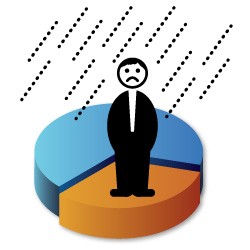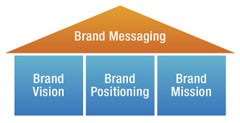Copywriting For the Web Part 3: How To Write to Your Audience
 After examining Parts 1 and 2 of Copywriting for the Web: the three C’s and five great examples of writing for the web, it’s time to concentrate on addressing the right people.
After examining Parts 1 and 2 of Copywriting for the Web: the three C’s and five great examples of writing for the web, it’s time to concentrate on addressing the right people.
 After examining Parts 1 and 2 of Copywriting for the Web: the three C’s and five great examples of writing for the web, it’s time to concentrate on addressing the right people.
After examining Parts 1 and 2 of Copywriting for the Web: the three C’s and five great examples of writing for the web, it’s time to concentrate on addressing the right people.
 A website redesign is a serious undertaking for any business, and as I discussed in a previous post on the web as an catalyst for better marketing practices, in many instances it forces the client to re-evaluate their brand strategy and marketing.
A website redesign is a serious undertaking for any business, and as I discussed in a previous post on the web as an catalyst for better marketing practices, in many instances it forces the client to re-evaluate their brand strategy and marketing.
According to a Six Revisions article published last fall, 60% of websites use sans-serif typefaces for headlines, the most popular being Arial, Helvetica, and Verdana.
In short, we may be witnessing the beginning of the end of the printed phone book. At the very least phone books are moving from the realm of the simply unnecessary to being perceived as actually wasteful and damaging. The demise of phone books may not be big news to anyone, but it’s an interesting time to think about your business and how well you have been adapting to the times:
Recently, we had a meeting with an organization seeking a new website.The prospect related with some angst, the multiple conflicting goals of the organization and the difficulty they’re having assuming a leadership position in their market.
Next week is Marathon Monday in Boston, which got me thinking about “marathon web projects.”What the Boston Marathon and marathon web projects have in common are that both can be painful, long and tedious. Where they differ is that running in the Boston Marathon can result in a feeling of deep accomplishment. Marathon web projects are…less satisfying.
 I’m finding it common that companies focus on getting their messaging right while being murky on their positioning.When I point this out, sometimes I get a blank stare or a comment that suggests to me that they view positioning and messaging as the same thing. Not understanding the difference can have big sales and marketing implications, but for now, let’s discuss how this impacts your web site.
I’m finding it common that companies focus on getting their messaging right while being murky on their positioning.When I point this out, sometimes I get a blank stare or a comment that suggests to me that they view positioning and messaging as the same thing. Not understanding the difference can have big sales and marketing implications, but for now, let’s discuss how this impacts your web site.
 This is my last post of 2010 and a time to briefly reflect on a few things that are top-of-mind as we close out the year.
This is my last post of 2010 and a time to briefly reflect on a few things that are top-of-mind as we close out the year.
The Secret Sauce
I’ve often heard it said that there are no new creative ideas, that everything’s been done. I’ve always hated that statement for its lazy and uninspired sentiment. In his book, “Outliers,” Malcolm Gladwell says, “researchers have settled on what they believe is the magic number for true expertise: ten thousand hours.” I’m happy to realize that I’ve done my 10,000 hours as a creative professional and the longer I’m in this business, the deeper my creative options become. My expanding database of memories, associations and relationships open the possibilities of finding unique creative solutions to our client’s communication problems.
Well, almost. Regardless of the fact that we provide integrated services, often when a client comes to us for a website, they are not thinking about branding, yet it is often the issue that will make or break the website. Branding is often considered more of a consumer concern or maybe just an expensive “nice-to- have.” Of the six key components of a website development project — Content, Information Architecture, Search, Design, Interactivity and Programming — “content” is nearly always the chief area of focus, where the most time is expended and where differing opinions can affect outcomes and timing.